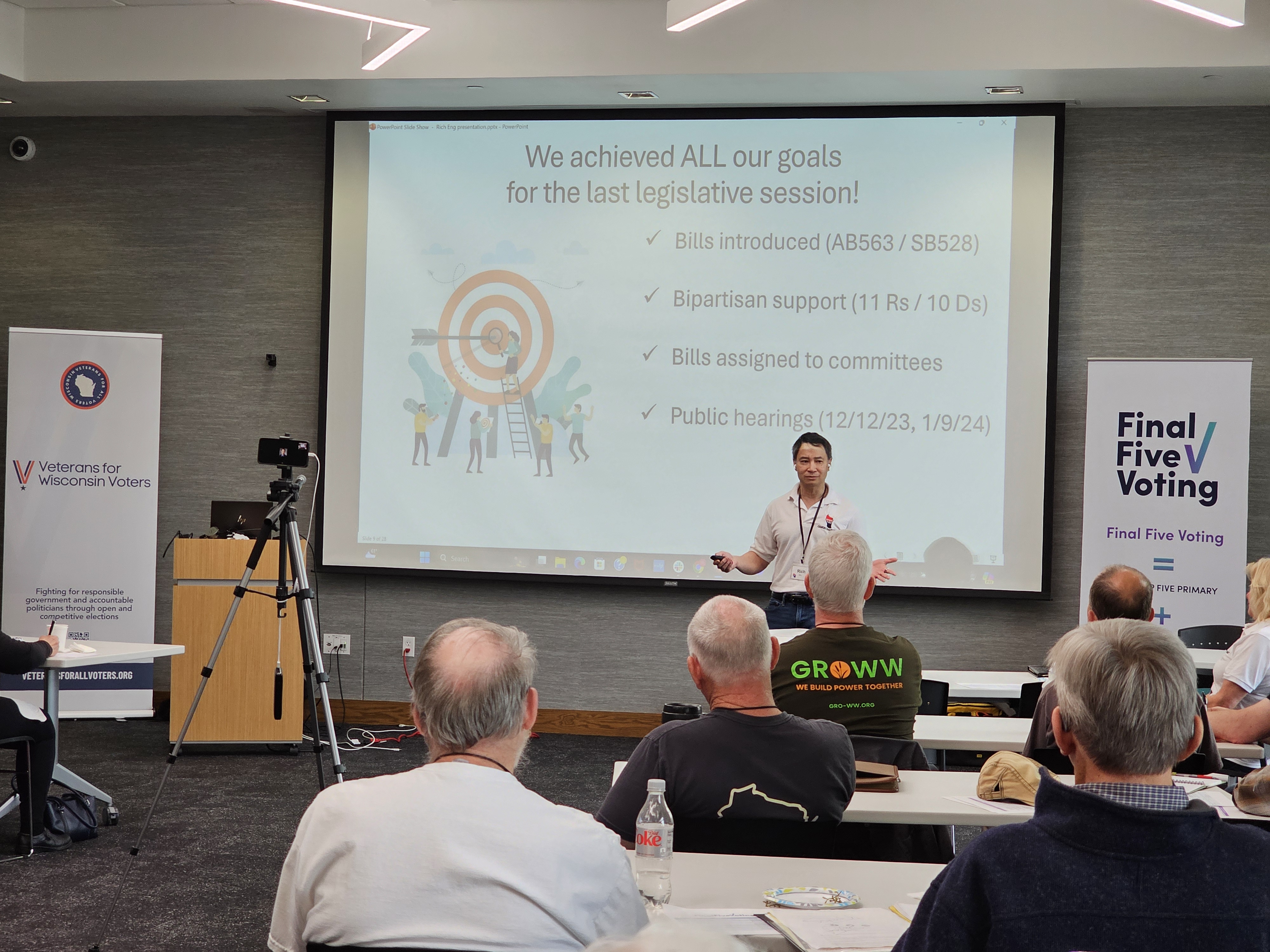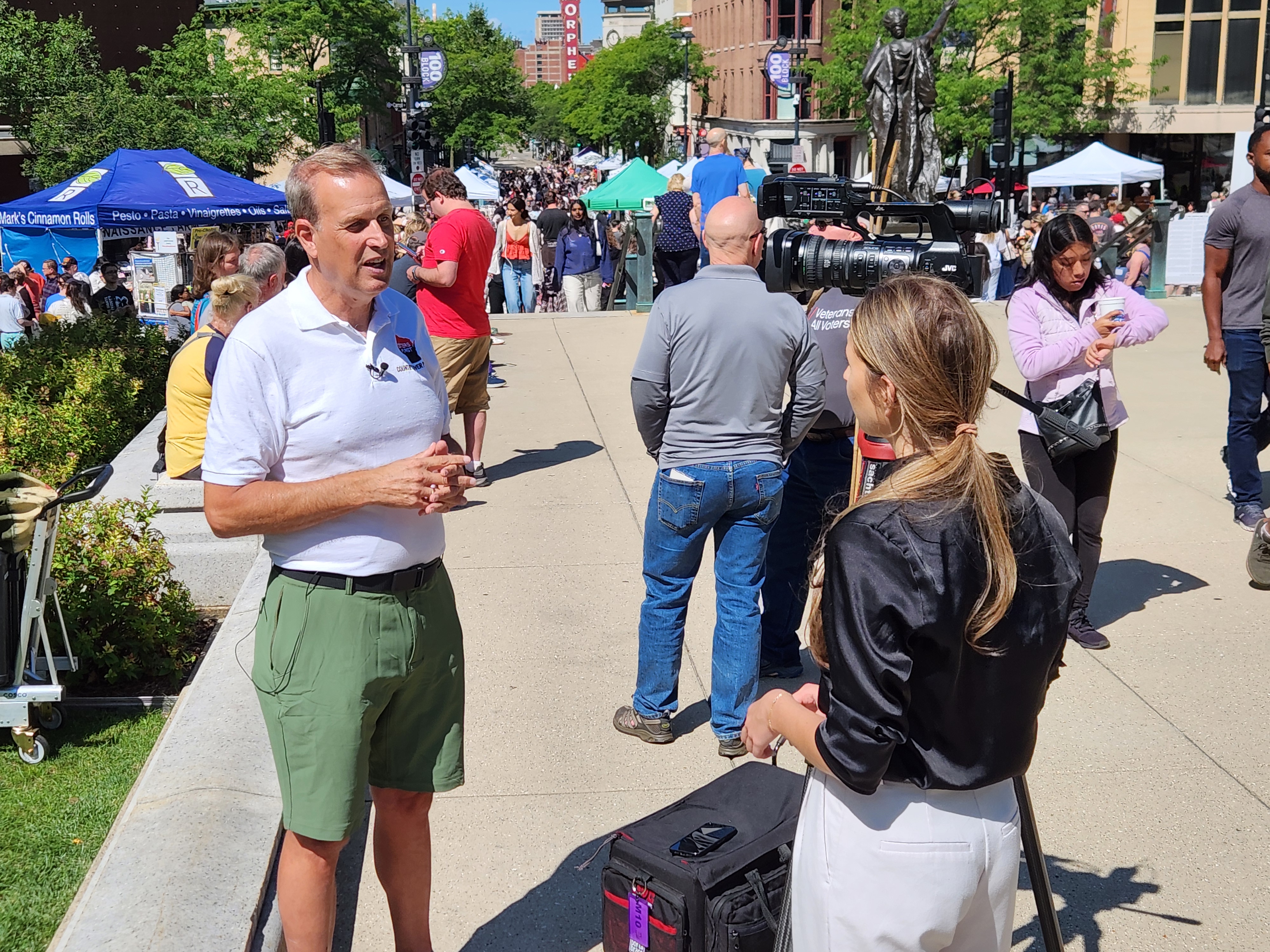As the 2024 presidential election approaches, Wisconsin finds itself at the center of a growing debate over third-party candidates and their potential to disrupt what promises to be another razor-thin contest in this critical swing state. The recent Wisconsin Supreme Court ruling to keep presidential candidate Robert F. Kennedy Jr. on the ballot has sparked renewed discussion about whether third-party candidates are "spoilers" in such pivotal races or if they represent a true democratic option for voters disillusioned by the two-party system.
As public discourse increases, efforts to change how elections are conducted in Wisconsin have gained traction. The grassroots organization, Voters First Wisconsin, is spearheading a push for final-five voting—a change they argue could promote bipartisan cooperation, encourage healthy competition among politicians, and reduce the spoiler effect of third-party candidates.
"The system we have now leads to strategic voting, where people often feel compelled to choose the 'lesser of two evils' to prevent a candidate they really don’t support from winning,” said Voters First Wisconsin founder Rich Eng. “Final-five voting could change that dynamic by letting voters rank their candidates, giving them more freedom to vote for who they truly believe in without fear of 'wasting' their vote.”
What Is Final-Five Voting?
Final-five voting, a variation of instant runoff voting, allows voters to rank candidates in order of preference in both primary and general elections. In the primary election, the five candidates who receive the highest number of votes advance to the ballot in the general election.
Voters then rank the five candidates according to their preferences in the general election. If no candidate receives an outright majority after the first round, the lowest-ranking candidates are eliminated, and their votes are redistributed based on voters' next choices. The process continues until one candidate reaches a majority.
Nathan Atkinson, an assistant professor of law at the University of Wisconsin-Madison and expert in the design of political and legal institutions, is skeptical about the promises made by advocates of final-five voting and raises concerns about the viability of the movement's goals.
Based on his research, he argues that success in a final-five system depends on securing sufficient core support to progress through the initial voting rounds, which creates uncertainty on whether there is enough space in the political center for third-party candidates to effectively compete and win.
Atkinson points out that supporters of final-five voting have differing views on what the reform is meant to achieve.
He believes final-five supporters should be asking themselves a critical question: “Will this change who wins elections? If the answer is no, then I don't think we should expect it to positively impact public trust in our governmental institutions. If the answer is yes, it could either foster trust or lead to the opposite effect, depending on the winner.”
Atkinson sees potential in the system but emphasizes its impact on election outcomes would depend heavily on voter education and how well the public understands the new approach.
"There's always the risk that reforms don’t achieve their intended outcomes if voters aren’t fully informed about how the process works," Atkinson said. "But if done right, final-five voting could change the calculus of elections in Wisconsin, especially when it comes to third-party influence."
Wisconsin's History of Tight Races and Third-Party Impact
Wisconsin has long been a battleground state where even the smallest shifts in voter behavior can tip the scales. In 2016, third-party candidates received 153,943 votes, enough to affect the result and contribute to former President Donald Trump’s narrow victory. Similar dynamics played out in 2020 when third-party candidate Jo Jorgensen captured 38,491 votes which swayed the state in favor of President Joe Biden.
With Robert F. Kennedy Jr.’s name set to appear on the Wisconsin ballot in 2024, the question of how many votes will be drawn away from either Vice President Kamala Harris or former President Donald Trump looms large.
Could final-five voting prevent the vote-splitting we’ve seen in past presidential elections? Advocates like Eng argue yes, but the challenge lies in convincing state lawmakers to adopt the system. That has proven to be a difficult task.
Sara Eskrich, executive director of Democracy Found, another Wisconsin-based organization advocating for final-five voting, says the voting reform has faced significant opposition from Republican lawmakers in the state.
In Wisconsin, final-five voting must be approved through the state legislature across two sessions. Eskrich noted that there was significant bipartisan support during the initial session when final-five voting was first introduced in 2022. However, as the movement has gained more attention, she has become increasingly concerned about growing partisan tensions.
“Many Republican leaders fear that final-five voting could disrupt their stronghold in key districts, but in reality, it empowers voters across the political spectrum and encourages candidates to focus on broader issues rather than partisan loyalty,” Eskrich said.
The Future of Wisconsin Elections
As both supporters and opponents of third-party candidates brace for another close election in Wisconsin, the conversation surrounding electoral change intensifies. While significant changes to voting systems will not be implemented in Wisconsin before the 2024 presidential election, the debate over final-five voting is a reminder that voters, and the systems they use, are evolving.
Eskrich says the success of instant runoff voting systems in Maine and Alaska, where the system has been used in presidential elections, has fueled the growth of the final-five movement across the country.
“We’re seeing new momentum in states like Nevada, Colorado, Idaho, and Montana, where voters are frustrated with the current system and are eager for reforms that give them more choice and a stronger voice in their elections,” Eskrich said.
"In the end, it's about empowering voters," Eng said. "Final-five voting could be a game-changer for Wisconsin, ensuring that no matter who voters support, their voices will be heard."


